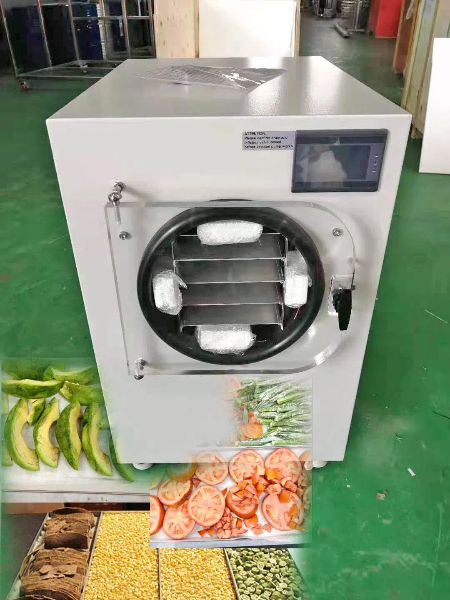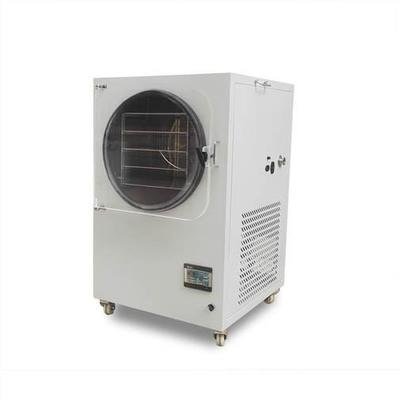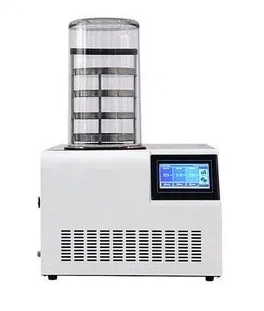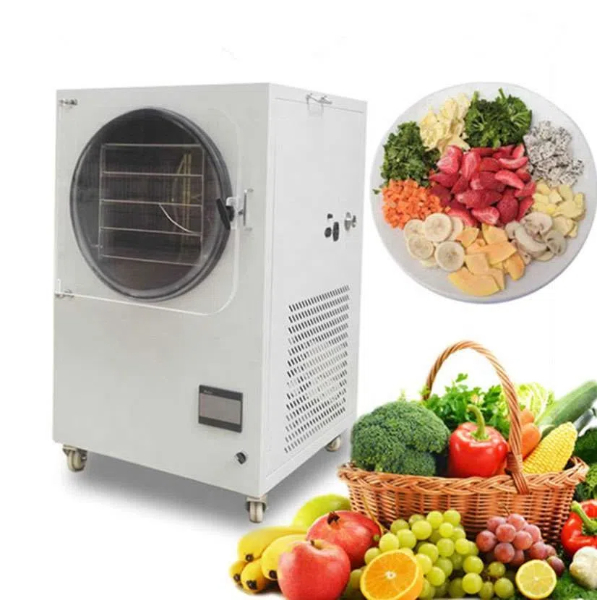
Content Menu
● Introduction to Freeze Drying Technology
● Understanding the Freeze Drying Process
● The Rise of Home Freeze Dryers
>> Advantages of Small Freeze Drying Machines
● Choosing the Right Small Freeze Drying Machine for Your Needs
>> Capacity
>> Energy Efficiency
>> Ease of Use
>> Noise Level
>> Maintenance Requirements
● Popular Small Freeze Drying Machines on the Market
● Setting Up Your Home Freeze Dryer
● Preparing Food for Freeze Drying
● The Freeze Drying Process: Step by Step
● Storing Freeze-Dried Foods
● Creative Uses for Your Home Freeze Dryer
● Maintenance and Care of Your Freeze Drying Machine
● Troubleshooting Common Issues
● The Future of Home Freeze Drying
● Conclusion
● Frequently Asked Questions
>> Q1: How long does the freeze-drying process typically take?
>> Q2: Can all types of food be freeze-dried?
>> Q3: How much electricity does a home freeze dryer use?
>> Q4: Is freeze-dried food healthy?
>> Q5: How do freeze-dried foods compare to dehydrated foods?
Introduction to Freeze Drying Technology
Freeze drying, also known as lyophilization, is a cutting-edge food preservation method that has gained significant popularity in recent years. At the heart of this technology lies the freeze drying machine for food, particularly small, compact units designed for home use. These innovative devices have revolutionized the way we approach food storage and preservation, offering a myriad of benefits for both casual users and culinary enthusiasts alike.
Understanding the Freeze Drying Process
Before delving into the specifics of small freeze drying machines for food, it's crucial to understand the basic principles behind freeze drying. The process involves three main steps:
1. Freezing: The food is rapidly frozen to preserve its structure.
2. Primary drying: The surrounding pressure is lowered, and heat is added to sublimate the frozen water directly into vapor.
3. Secondary drying: Any remaining bound water is removed, leaving behind a completely dry product.
This process results in food that retains its original shape, color, and nutritional value, while being shelf-stable for extended periods.
The Rise of Home Freeze Dryers
In recent years, the availability of compact freeze drying equipment has made this technology accessible to home users. These small food preservation machines, often referred to as household freeze dryers for food, have opened up new possibilities for long-term food storage and creative culinary applications.
Advantages of Small Freeze Drying Machines
1. Space-efficient: Countertop freeze dryers are designed to fit comfortably in most kitchens.
2. User-friendly: Many models feature intuitive controls and automated processes.
3. Versatility: These machines can handle a wide variety of foods, from fruits and vegetables to meats and complete meals.
4. Cost-effective: While the initial investment may be significant, home freeze dryers can save money in the long run by reducing food waste and allowing bulk purchasing.
5. Customization: Users have complete control over the foods they preserve, ensuring quality and avoiding additives.
Choosing the Right Small Freeze Drying Machine for Your Needs
When selecting a compact freeze drying equipment for your home, several factors should be considered:
Capacity
Mini freeze dry machines come in various sizes. Consider how much food you plan to process regularly and choose a model that can accommodate your needs without taking up too much space.
Energy Efficiency
Look for energy-efficient models to keep operating costs down. Some portable food dehydrators and freeze dryers are designed with energy conservation in mind.
Ease of Use
Opt for a personal food preservation system with user-friendly controls and clear instructions. Many modern units feature digital displays and preset programs for different food types.
Noise Level
Since the freeze drying process can take several hours, consider the noise level of the machine, especially if you plan to run it overnight or in shared living spaces.
Maintenance Requirements
Choose a small-scale lyophilization device that is easy to clean and maintain. Removable trays and accessible components can make the upkeep process much simpler.

Popular Small Freeze Drying Machines on the Market
While specific brand recommendations are not provided in this article, it's worth noting that several manufacturers offer high-quality compact food sublimation units for home use. When researching options, look for reputable brands with positive customer reviews and reliable customer support.
Setting Up Your Home Freeze Dryer
Once you've selected your freeze drying machine for food small, proper setup is crucial for optimal performance:
1. Choose a well-ventilated area with a stable temperature.
2. Ensure the machine is level and has adequate clearance on all sides.
3. Connect to a dedicated electrical circuit to prevent overloading.
4. Familiarize yourself with the control panel and safety features.
5. Perform any initial cleaning or preparation steps recommended by the manufacturer.
Preparing Food for Freeze Drying
To get the best results from your small freeze drying machine for food, proper food preparation is essential:
1. Choose fresh, high-quality ingredients.
2. Clean and sanitize all food items thoroughly.
3. Cut foods into uniform pieces to ensure even drying.
4. Pre-treat certain foods (like apples or potatoes) to prevent browning.
5. Arrange food on trays with adequate spacing for air circulation.
The Freeze Drying Process: Step by Step
While the exact process may vary depending on your specific model of compact freeze drying equipment, the general steps are as follows:
1. Load prepared food onto the trays and place them in the freeze dryer.
2. Close the door securely and select the appropriate program or settings.
3. Allow the machine to run through its freezing cycle.
4. The primary drying phase will begin automatically, sublimating the ice.
5. Secondary drying removes any remaining moisture.
6. Once complete, the machine will signal that the process is finished.
Storing Freeze-Dried Foods
Proper storage is crucial to maintain the quality of your freeze-dried foods:
1. Allow foods to cool completely before packaging.
2. Use airtight containers or mylar bags with oxygen absorbers.
3. Label containers with the contents and date of freeze-drying.
4. Store in a cool, dry place away from direct sunlight.
5. Properly stored freeze-dried foods can last for years without significant loss of quality.

Creative Uses for Your Home Freeze Dryer
A small freeze drying machine for food opens up a world of culinary possibilities:
1. Create lightweight meals for camping and hiking.
2. Preserve seasonal fruits and vegetables for year-round enjoyment.
3. Make your own freeze-dried pet treats.
4. Experiment with freeze-dried herbs and spices for intense flavors.
5. Preserve emergency food supplies for long-term storage.
Maintenance and Care of Your Freeze Drying Machine
To ensure the longevity and efficiency of your compact freeze drying equipment:
1. Clean the interior and trays after each use.
2. Regularly inspect and replace seals and gaskets as needed.
3. Keep the exterior clean and free from dust.
4. Follow the manufacturer's guidelines for oil changes and filter replacements.
5. Store the machine in a clean, dry environment when not in use.
Troubleshooting Common Issues
Even the best small-scale lyophilization devices may encounter issues. Here are some common problems and solutions:
1. Incomplete drying: Ensure proper spacing of food items and avoid overloading.
2. Unusual noises: Check for loose components or contact customer support.
3. Longer cycle times: Clean the machine thoroughly and ensure proper ventilation.
4. Ice buildup: Defrost the unit according to manufacturer instructions.
5. Power issues: Verify the electrical connection and circuit capacity.
The Future of Home Freeze Drying
As technology advances, we can expect to see even more innovative features in future models of freeze drying machines for food small:
1. Improved energy efficiency
2. Faster processing times
3. Enhanced connectivity and smart home integration
4. More compact designs for smaller kitchens
5. Expanded food compatibility and specialized settings
Conclusion
The advent of small freeze drying machines for food has brought professional-grade preservation technology into the home kitchen. These compact food sublimation units offer unparalleled flexibility in food storage and preparation, allowing users to preserve the flavors and nutritional value of their favorite foods for extended periods. Whether you're an avid outdoors enthusiast, a culinary experimenter, or simply looking to reduce food waste, a home freeze dryer can be a valuable addition to your kitchen arsenal.
As you embark on your freeze-drying journey, remember that practice and experimentation are key to mastering this preservation method. With time, you'll discover the best techniques for different foods and develop a repertoire of delicious, long-lasting meals and snacks.

Frequently Asked Questions
Q1: How long does the freeze-drying process typically take?
A1: The freeze-drying process can take anywhere from 20 to 40 hours, depending on the food type, quantity, and moisture content. Some small freeze drying machines for food may have faster cycle times for certain foods.
Q2: Can all types of food be freeze-dried?
A2: While most foods can be freeze-dried, some are better suited to the process than others. Foods with high fat content may not freeze-dry well, and those with high sugar content may become sticky. However, fruits, vegetables, meats, and many prepared dishes freeze-dry excellently.
Q3: How much electricity does a home freeze dryer use?
A3: The energy consumption of a small freeze drying machine for food varies depending on the model and batch size. On average, a home freeze dryer might use between 1-3 kWh per hour of operation. Energy-efficient models may use less.
Q4: Is freeze-dried food healthy?
A4: Yes, freeze-dried food retains most of its original nutritional value. The process preserves vitamins, minerals, and enzymes better than many other preservation methods. However, it's important to note that freeze-drying does not eliminate the need for proper food safety practices.
Q5: How do freeze-dried foods compare to dehydrated foods?
A5: Freeze-dried foods generally retain more of their original flavor, texture, and nutritional value compared to dehydrated foods. They also rehydrate more quickly and completely. However, freeze-drying equipment is typically more expensive than dehydrators, and the process takes longer.












